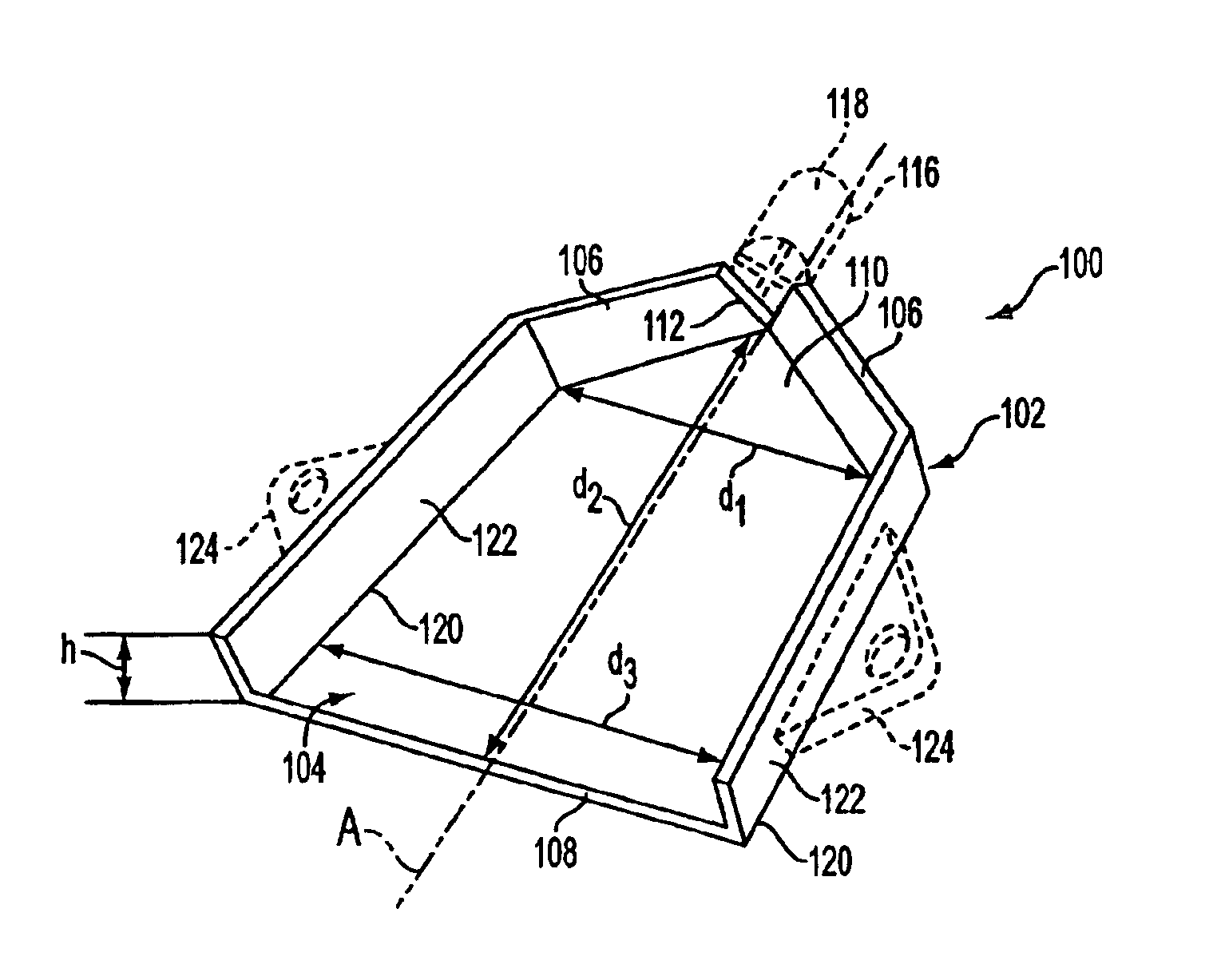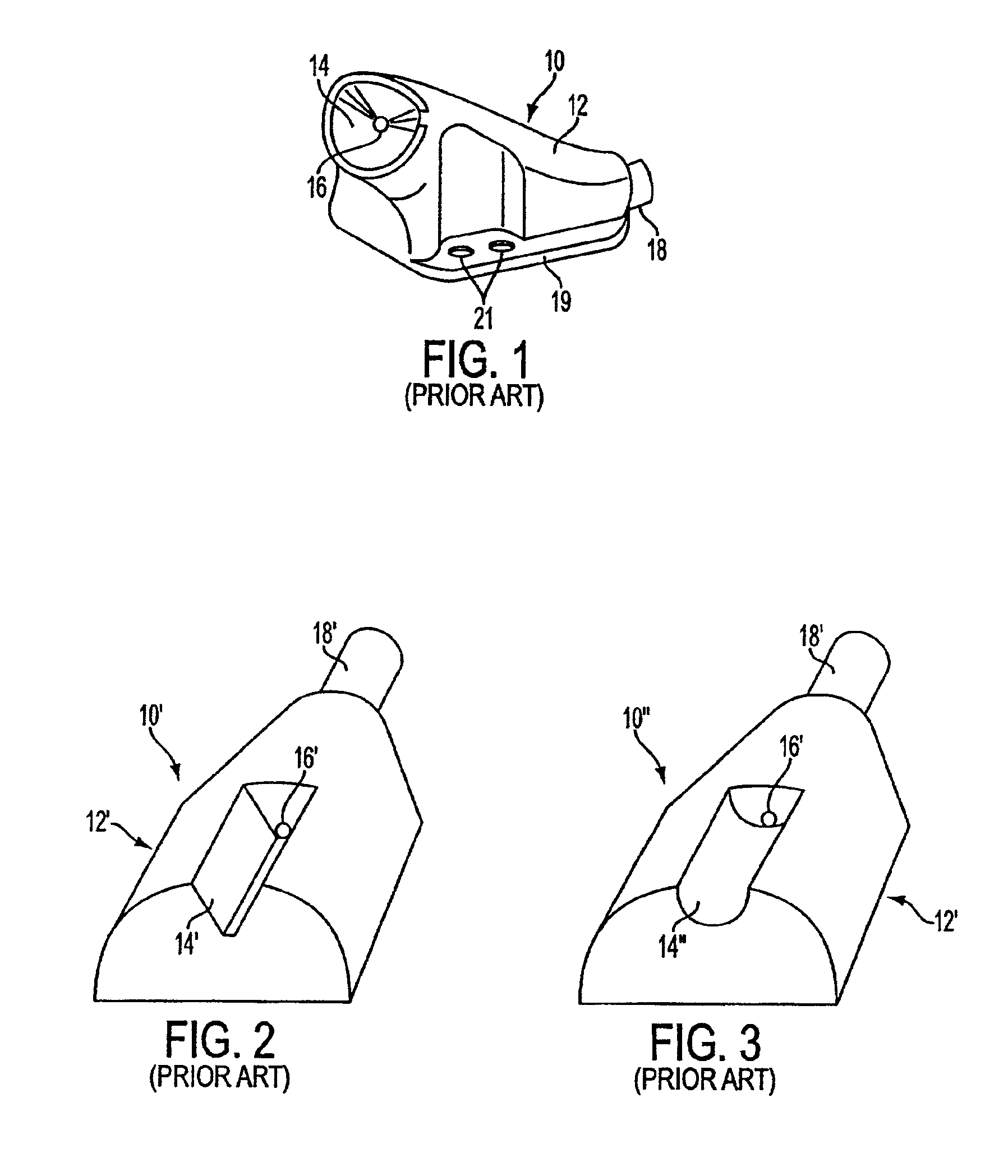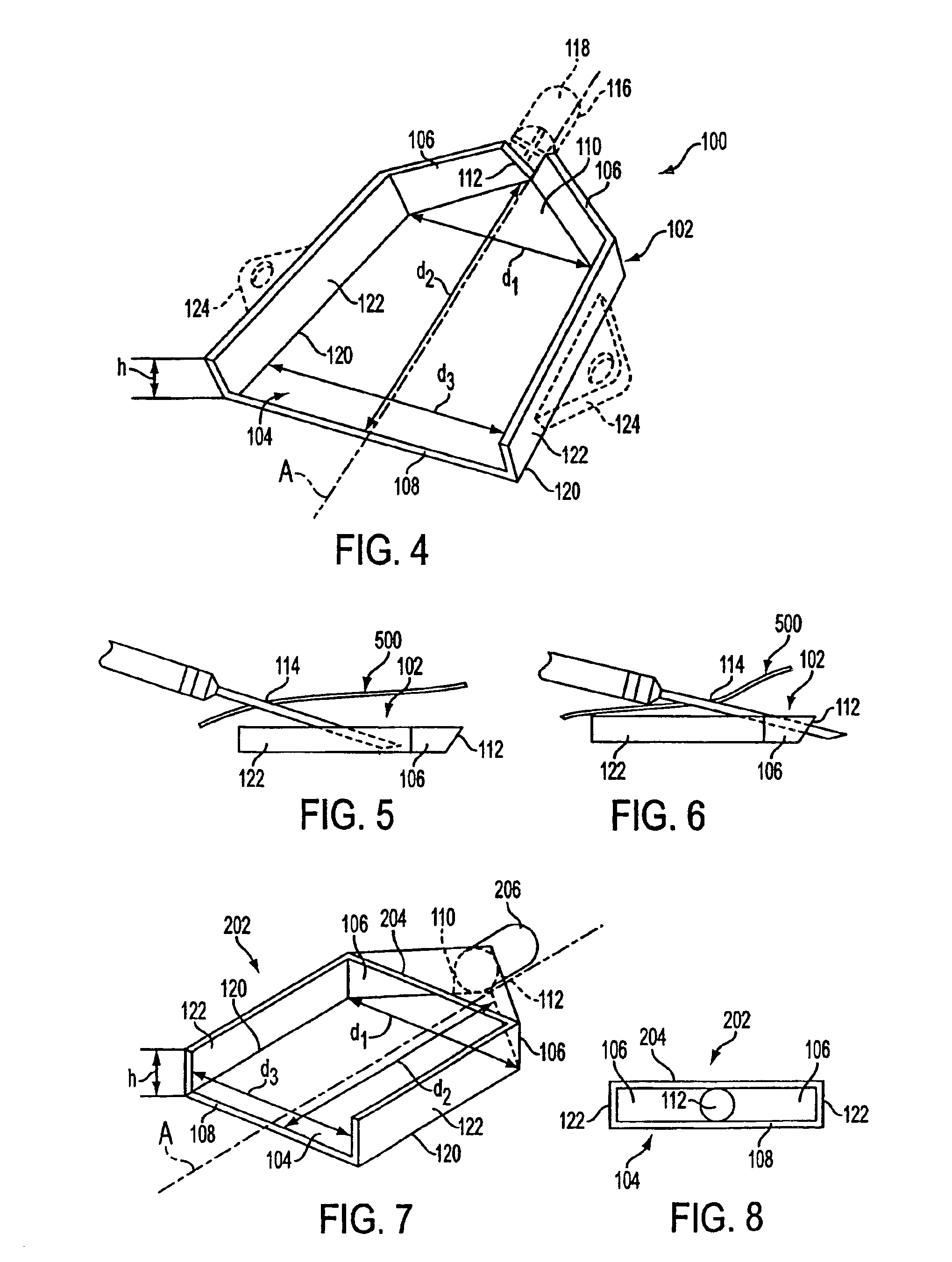Subcutaneous access port
a subcutaneous access and port technology, applied in the field of vascular access apparatuses to the living body, can solve the problems of limiting treatment options, worsening prognosis, and thrombosis of the vessel, and achieve the effects of increasing the filament strike area, short overall height, and reducing the risk of strok
- Summary
- Abstract
- Description
- Claims
- Application Information
AI Technical Summary
Benefits of technology
Problems solved by technology
Method used
Image
Examples
Embodiment Construction
[0036]Referring to FIG. 4, the present disclosure provides an implantable patient access device 100 including a port 102 for receiving and guiding a filament, such as a needle, into an entry region 112 of the implantable device. The port 102 includes a plate 104 for receiving a filament, and at least two walls 106 extending upwardly from the plate 104. In general, the walls 106 are shaped and positioned to guide a filament moving between opposing first and second ends 108, 110 of the plate 104 towards the entry region 112 defined between the walls 106 and located substantially at the second end 110 of the plate 104. In the particular embodiment shown, a distance between the walls 106 decreases monotonically towards the entry region 112, although a port constructed in accordance with the present disclosure is not limited to a monotonically decreasing distance between the walls.
[0037]In addition, a greatest distance “d1” between the walls 106, which in the present embodiment correspon...
PUM
 Login to View More
Login to View More Abstract
Description
Claims
Application Information
 Login to View More
Login to View More - R&D
- Intellectual Property
- Life Sciences
- Materials
- Tech Scout
- Unparalleled Data Quality
- Higher Quality Content
- 60% Fewer Hallucinations
Browse by: Latest US Patents, China's latest patents, Technical Efficacy Thesaurus, Application Domain, Technology Topic, Popular Technical Reports.
© 2025 PatSnap. All rights reserved.Legal|Privacy policy|Modern Slavery Act Transparency Statement|Sitemap|About US| Contact US: help@patsnap.com



